![]() By Bill Koran*
By Bill Koran*
The residence is a new home first occupied in November 2019. The original HVAC met the 2018 International Energy Code. The home was setup for two zones—downstairs and upstairs—with zone valves controlling which zone received airflow based on the call from the thermostats. The fixed capacity heating and cooling system maintained space temperature setpoints. The challenge of satisfying two dissimilar zones with single-capacity equipment resulted in issues with supply air temperatures in both heating and cooling. It also resulted in very high noise levels in the smaller zone when it was calling for heating or cooling. Also of great importance, the system often operated outside of its specification limits for temperature rise in the furnace.
Therefore, we decided to upgrade the system to variable flow and variable capacity to better satisfy the two different zones. This was expected to improve efficiency and comfort while reducing noise. The new system also has an ECM blower motor and the SEER rating for the air conditioning efficiency increased from 13 to 17. Heating was and is provided by a condensing gas furnace with 96% efficiency and is not a subject of this energy savings estimate other than the effect of the fan change on electricity use.
The original system operated from November 2019 through March 16, 2021. The new system was installed on March 17, and this savings estimate is for operation from March 18 through July 9, 2021. To maintain some level of privacy, the savings are reported in percentages and other metrics are reported as a percentage of baseline peak hourly average kW
The reported numbers are for the whole home using interval data downloaded from Idaho Power; no separate measurement of the HVAC was made. However, non-HVAC energy use of the home is low, so the savings uncertainty is low.
The free Microsoft Excel spreadsheet add-in for analysis of energy use in buildings, ECAM, was used for all analyses. (ECAM version 7 is available at https://sbwconsulting.com/ecam.) A check of the expected polynomial relationship to weather versus the chosen ECAM model was the only custom analysis.
Overall Savings: 22.2% ±4.1% Avoided Energy Use and Uncertainty @ 90% Confidence Level
Figure 1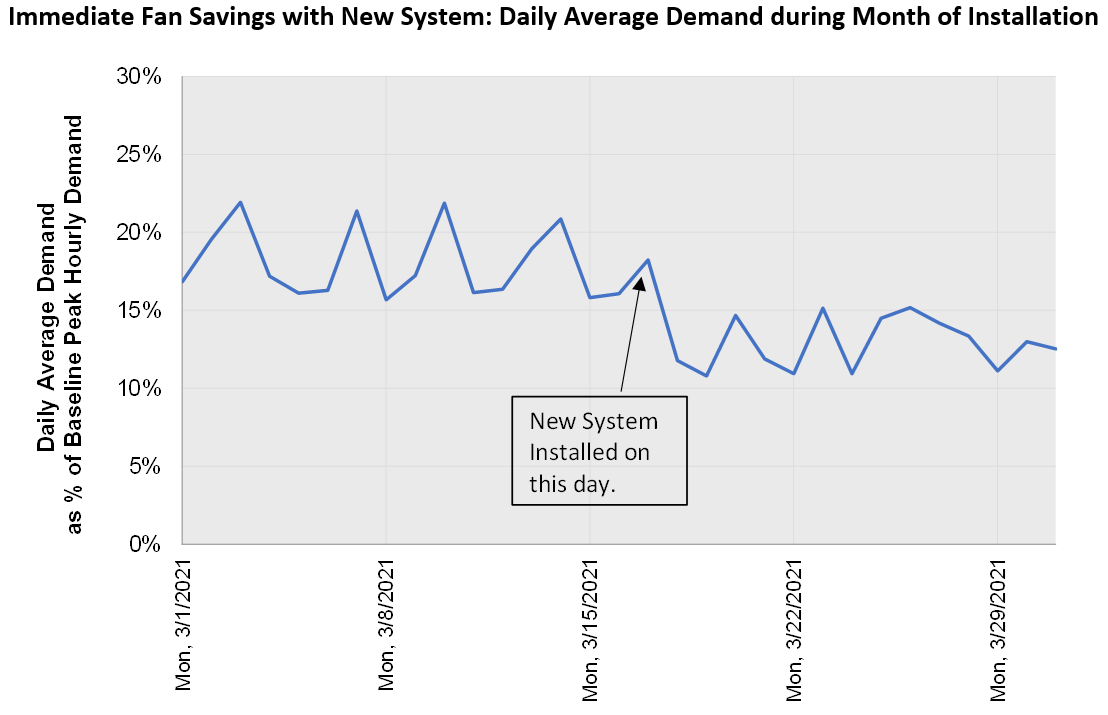
Figure 2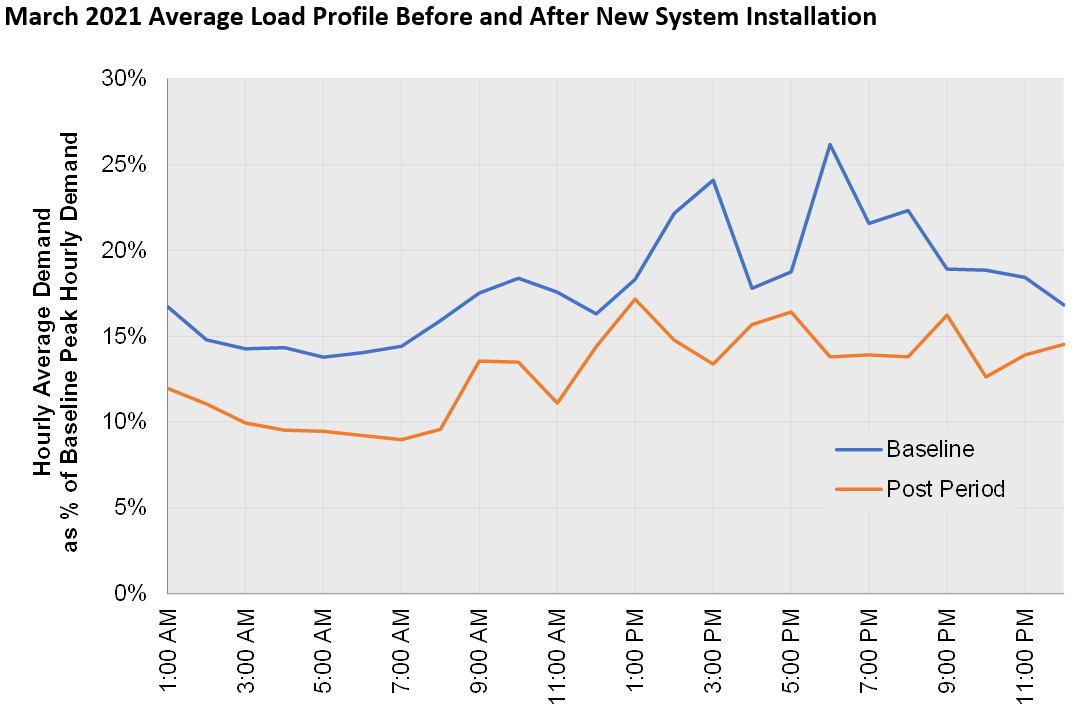
Figure 3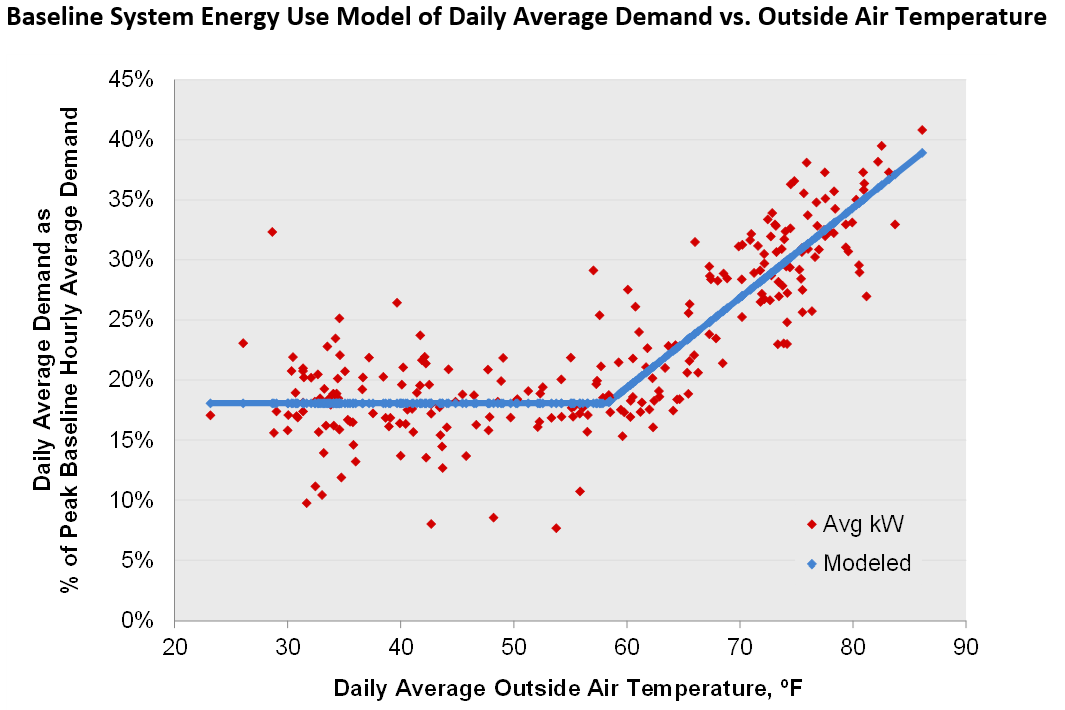
Figure 4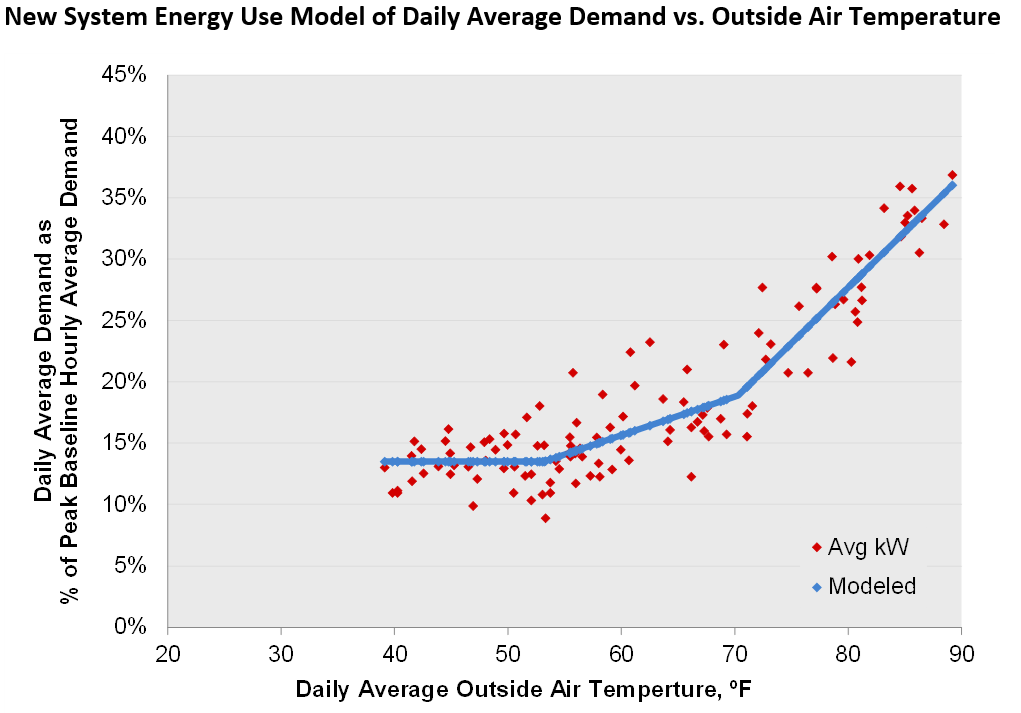
An all-variable speed system would be expected to follow a polynomial relationship with weather, especially in cooling. Such a relationship will typically be between a 2nd-order and 3rd order polynomial, depending on controls. The polynomial models did not provide a closer fit than the 5-parameter change point model. Since the 5-parameter model is included in ECAM and provided the best fit, it was used for estimating savings.
Figure 5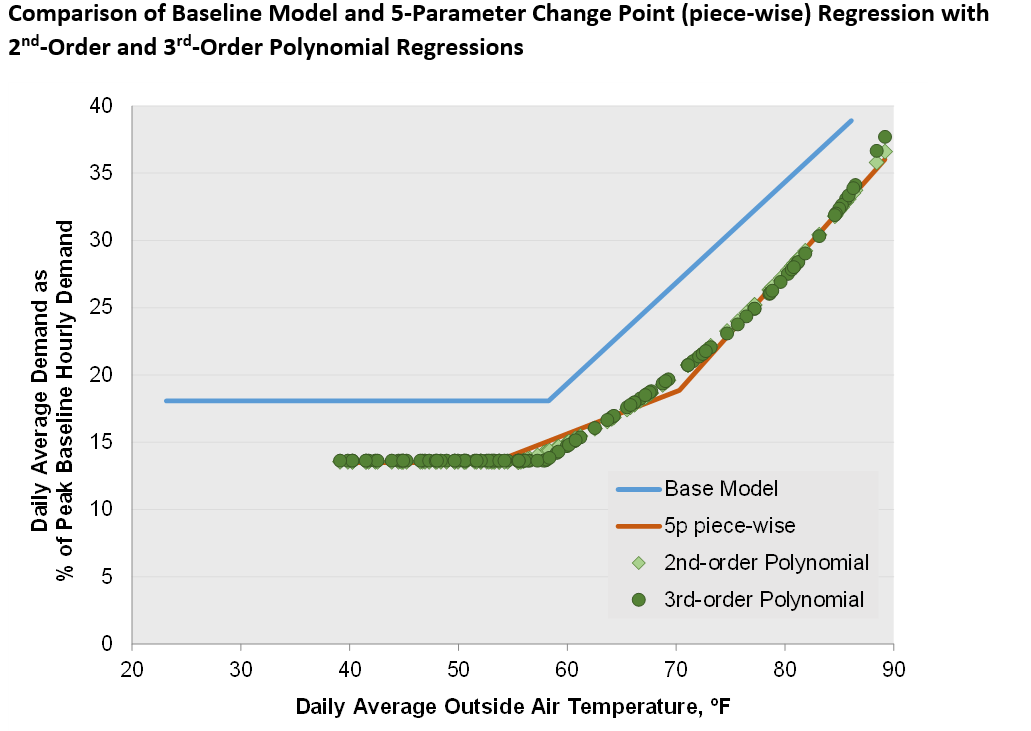
From the above chart, we can also see that the savings increase slightly when cooling, reaching a maximum of about 7.5% of baseline peak kW at temperatures between 70 and 77 ºF. This is about 25% of the baseline value at those temperatures, i.e. (30-22.5)/30 = 25%.
This increase in absolute savings in cooling illustrates that savings is achieved in compressor energy as well as the fan energy savings shown at cooler temperatures. Peak demand savings are also apparent, despite the (small) losses associated with the variable speed drive. To see these savings, hourly or shorter-interval data is needed, depending upon how the utility measures peak demand. Only hourly data was available. The highest demand in the post period was 19% lower than the highest demand in the baseline period.
TMY3 weather for Boise, Idaho, USA was used to estimate the normalized savings we can expect over a full year: 24.1% ±4.0% Normalized Savings and Uncertainty @ 90% Confidence Level.
We are pleased with the improved comfort and higher efficiency of the new system. Further savings are expected with future changes to the grounds around the condensing unit to reduce solar heat absorption in that area, which results in local air temperatures that can be 5 to 10 ºF above the general ambient air temperature.
![]()
(*) Bill Koran is a member of EVO's IPMVP Committee.
For futher information: wekoran@comcast.net




